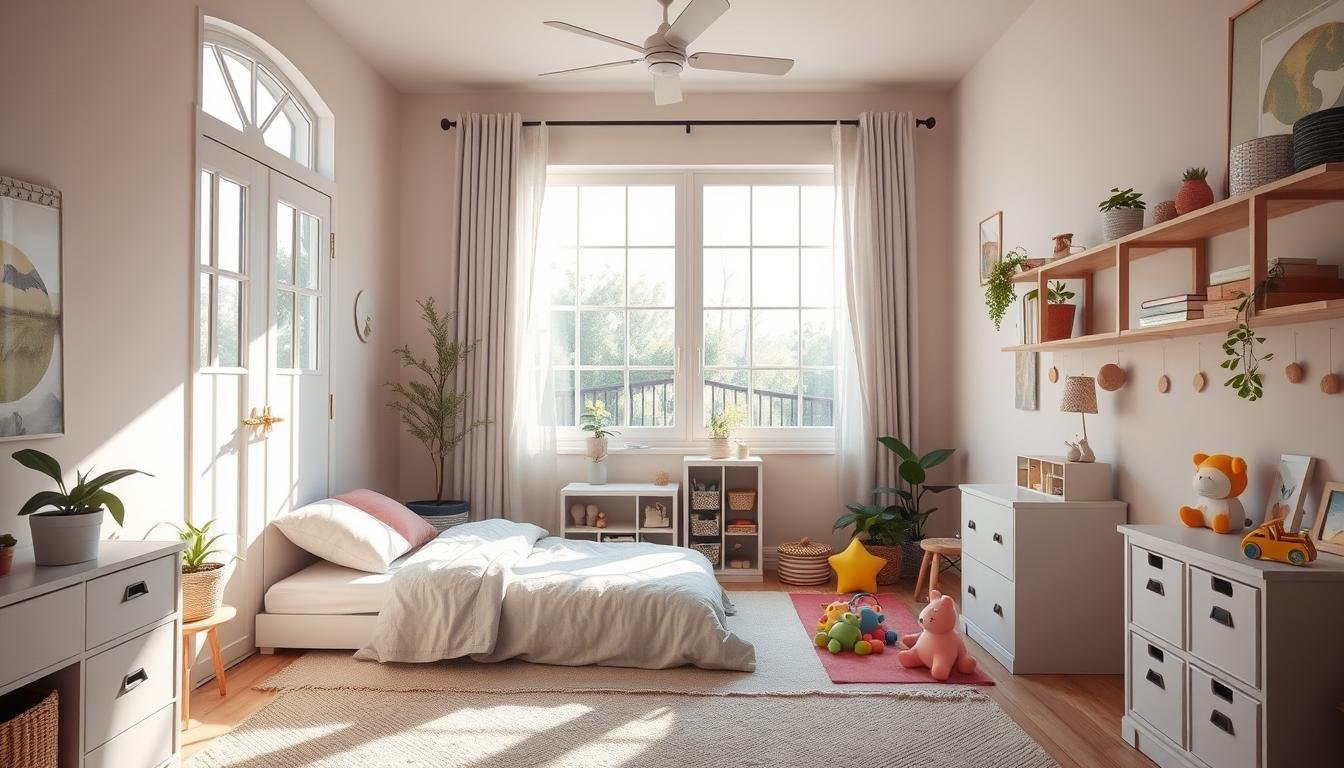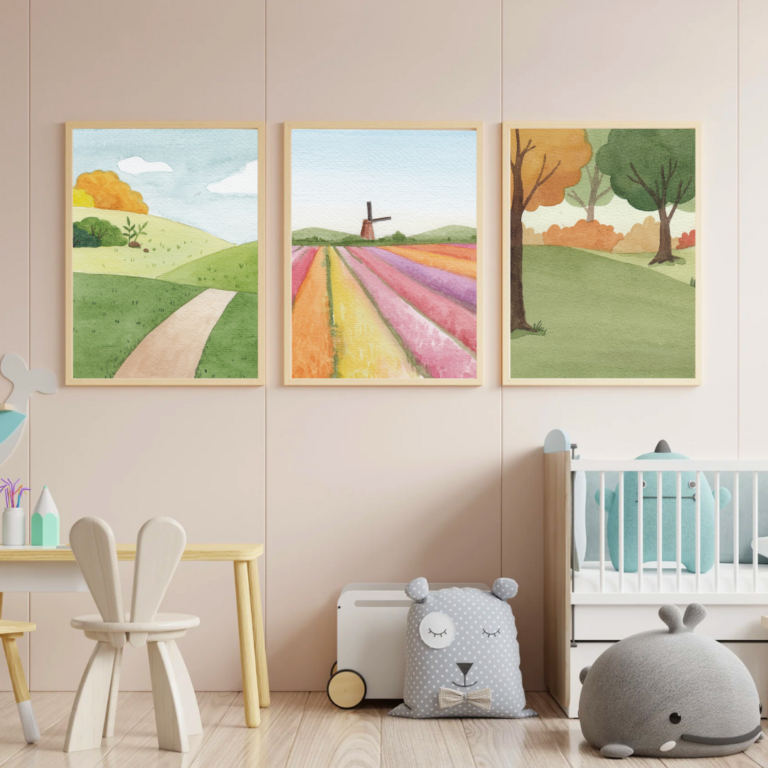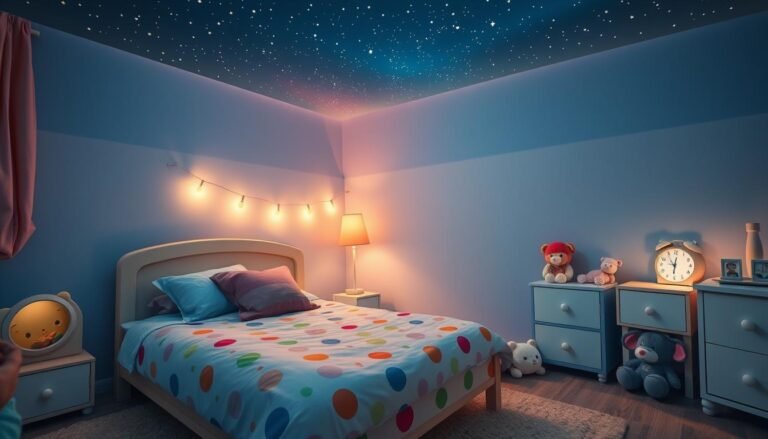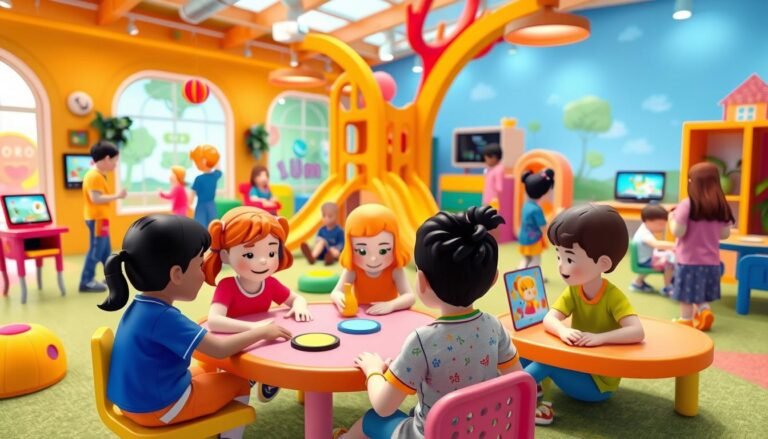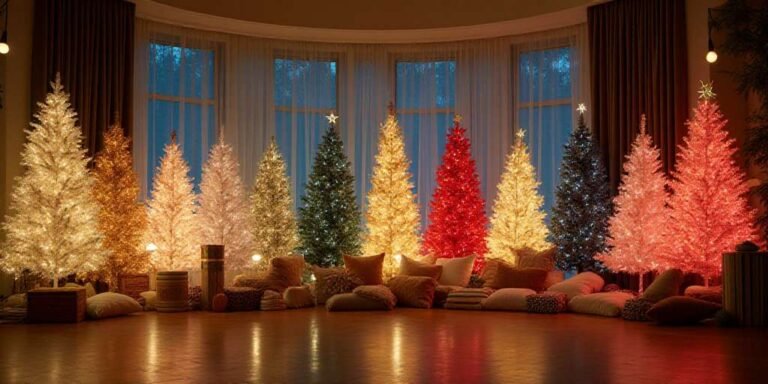Feng Shui for Kids: Designing a Balanced Child’s Room
Every parent wants a safe space for their child to grow and learn. Child room feng shui is a way to make this dream come true. It helps create a room that boosts both physical and emotional health.
Feng shui for kids’ rooms is not just about furniture. It’s about making a space that encourages calmness and creativity. This ancient practice believes our surroundings greatly affect our feelings and thoughts, even more so for kids.
Picture a room where your child feels safe, inspired, and balanced. With careful design and placement, you can turn a regular bedroom into a special place. It will help your child grow and reach their full abilities.
Key Takeaways
- Feng shui creates a nurturing environment for children
- Energy flow impacts emotional and mental well-being
- Intentional design can support child development
- Room layout matters more than you might think
- Small changes can create significant positive impacts
Understanding Feng Shui and Its Importance for Children
Feng shui is an ancient Chinese practice that aims to create harmonious living spaces. It balances energy flow. For children’s rooms, feng shui tips can greatly improve their environment. This supports their emotional and mental growth.
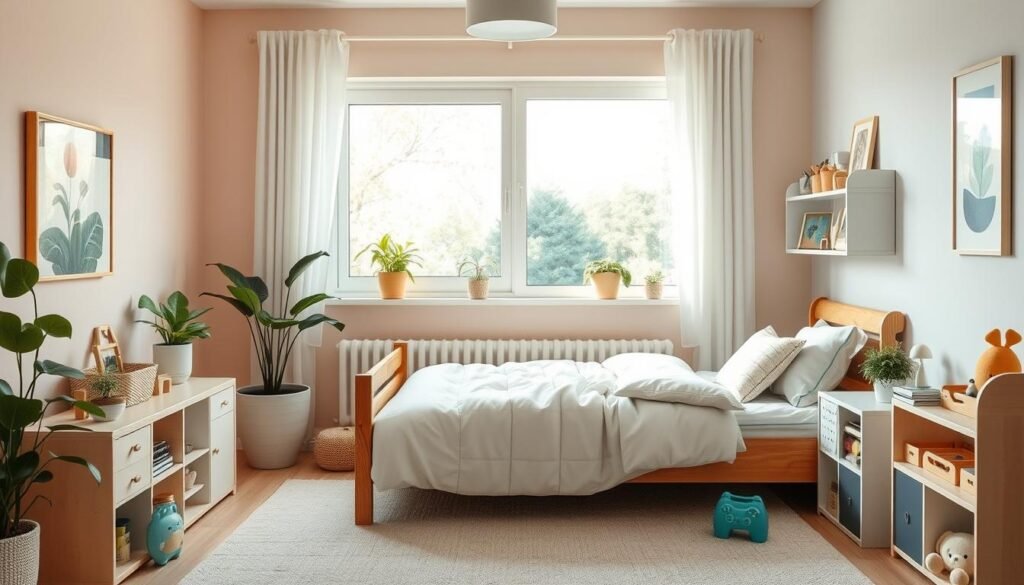
Feng shui is more than just decoration. It’s about making a space that nurtures a child’s growth and well-being. By grasping its basics, you can design a room that boosts your child’s energy.
What is Feng Shui?
Feng shui comes from ancient Chinese poetry and means “wind and water”. It’s a system that understands how environments affect us. It involves arranging spaces to improve positive energy, or chi. This energy can shape mood, behavior, and health.
Key Principles and Elements
Feng shui bases its balance on five main elements:
- Wood: Represents growth and creativity
- Fire: Symbolizes passion and enthusiasm
- Earth: Provides stability and grounding
- Metal: Indicates clarity and precision
- Water: Reflects emotion and communication
“The arrangement of every room impacts the emotional and mental development of children, supporting their overall well-being and success.”
To boost a child’s energy with feng shui, follow these tips:
- Place the bed in a “command position” where your child can see the door
- Choose soft, calming colors like pastels
- Keep clutter low to enhance positive energy flow
- Add round shapes to foster creativity
By applying these feng shui principles, you can make a supportive space. This space will help your child feel safe, focused, and inspired.
Creating a Safe and Nurturing Environment for Feng Shui for Kids
Designing a child’s bedroom with feng shui is more than just making it look good. It’s about making a space that helps your child feel safe and happy. When you use feng shui for a child’s room, safety and care are key.
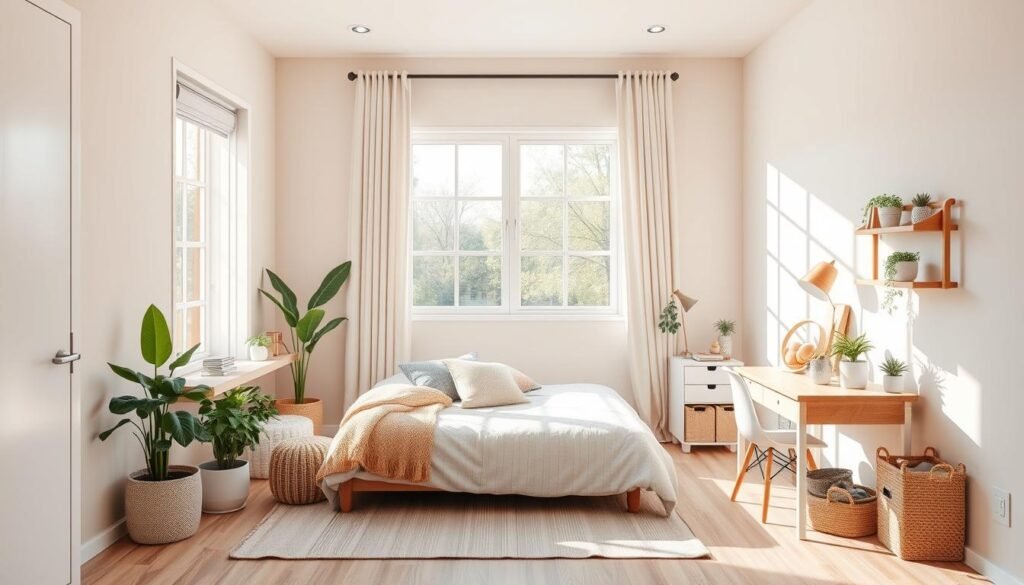
To make a feng shui child’s room, you need to focus on a few important things. These things help make a balanced and caring space:
- Minimize sharp corners and possible dangers
- Make sure there are clear paths for energy to move
- Pick furniture that helps positive energy flow
Safety Through Thoughtful Design with Feng Shui for Kids
Studies show that 60% of kids sleep better in tidy spaces. When you design your child’s room, focus on safety by:
- Securing heavy furniture to walls
- Removing things that could cause tripping
- Choosing furniture with smooth edges
Selecting Nurturing Furnishings
Picking the right furniture is key in feng shui for a child’s room. Here are some tips:
| Furniture Type | Feng Shui Recommendation |
|---|---|
| Bed Placement | Put the bed away from the door, facing the right direction |
| Study Area | Place the desk near a window, not against a wall |
| Storage | Use natural materials, keep areas tidy |
“A child’s room should be a sanctuary that nurtures growth, creativity, and peaceful energy.”
By following these feng shui tips, you make a room that’s not just pretty. You also help your child grow and feel good in their space.
Ideal Room Layout for Child Room Feng Shui
Creating a perfect space for your child is more than just furniture. It’s about arranging the room with feng shui to boost your child’s well-being. This means thinking about energy flow and where things go.
Strategic Furniture Placement for Harmony in the Feng Shui for Kids
When setting up your child’s room, keep these feng shui tips in mind:
- Place the bed against a solid wall for safety
- Make sure there’s a clear view of the door but not straight on
- Leave room for movement and play
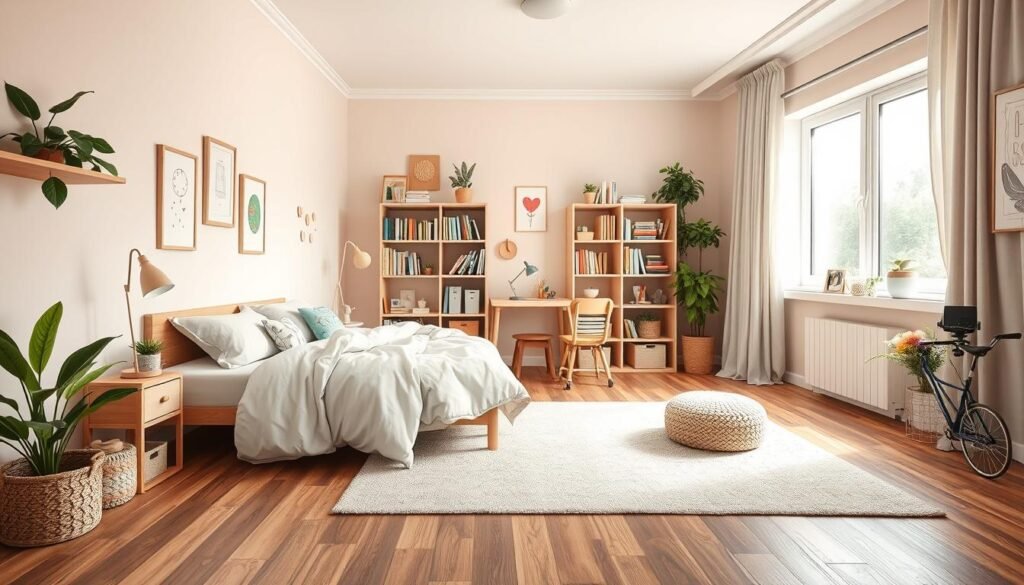
Building Energetic Flow in the Space for Feng Shui for Kids
The western part of a room is key in feng shui for kids. It’s linked to creativity and well-being, thanks to the metal element.
“A well-designed room can nurture your child’s growth and emotional health.” – Feng Shui Expert
To boost room energy, consider these:
- Use white and grey colors
- Add round shapes
- Hang art that shows joy and stability
- Choose natural materials like pewter and clay
Interestingly, 70% of parents think room layout really affects their child’s behavior. By using these feng shui tips, you can make a space that helps your child grow.
Colors that Promote Calmness and Focus your Feng Shui for Kids
Choosing the right colors is key when setting up a child’s room with feng shui. Soft blues and gentle greens help create a calm and focused space. They reduce anxiety and help your child sleep better.
Use calming colors like baby blue, sky blue, sage green, and mint. These colors make the room peaceful and support your child’s feelings. Soft neutrals like beige, taupe, and dove gray add stability and security.
Pastel pinks or lavender can add warmth and closeness. They have a calming effect and help connect with the spiritual side. Remember, softer colors are better for relaxation than bright ones.
Adding natural light and choosing the right colors can make a big difference. Mixing calm colors with neutral ones keeps the room interesting and peaceful. This way, you create a space that helps your child grow emotionally and mentally.

